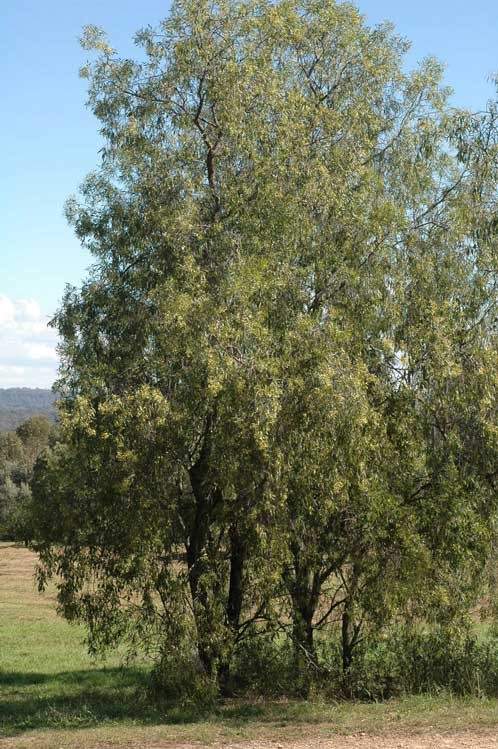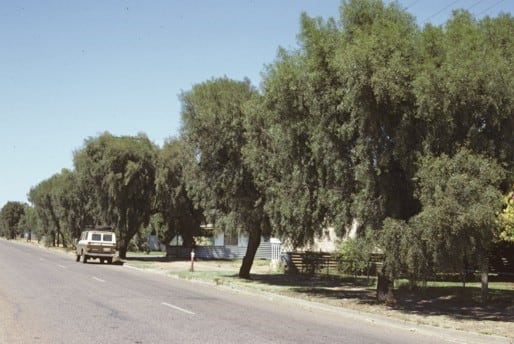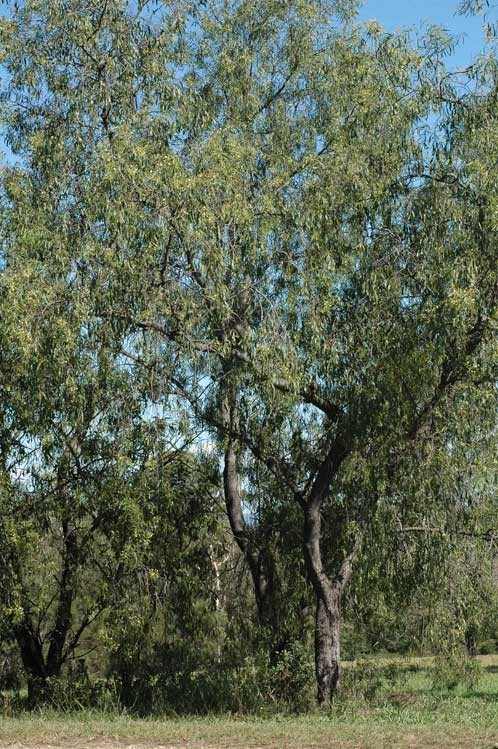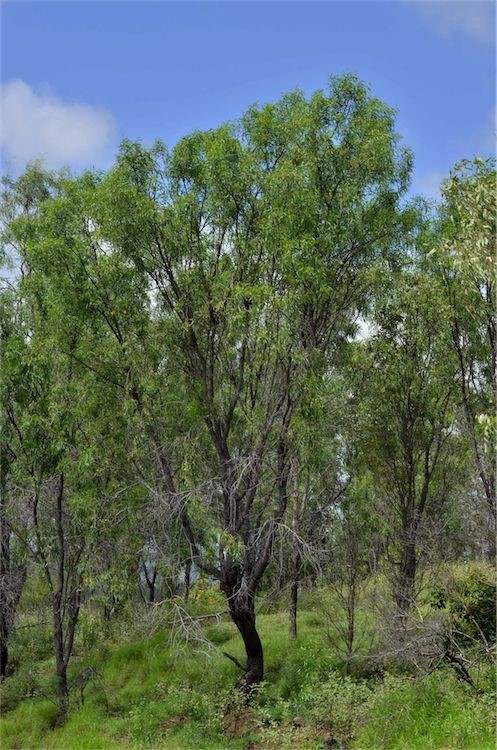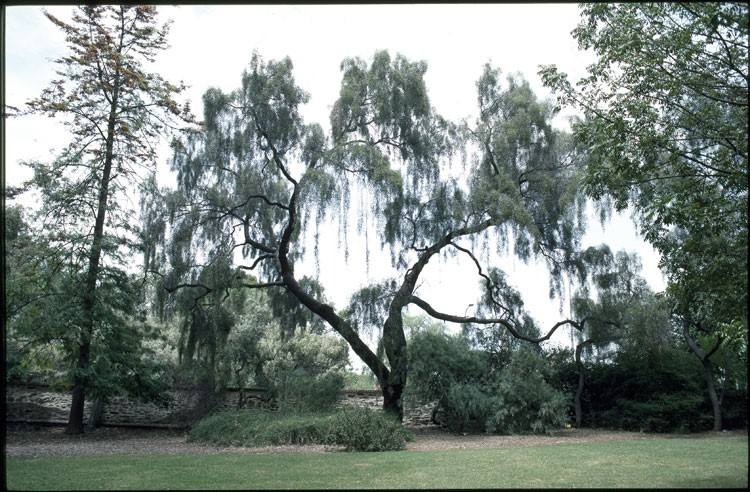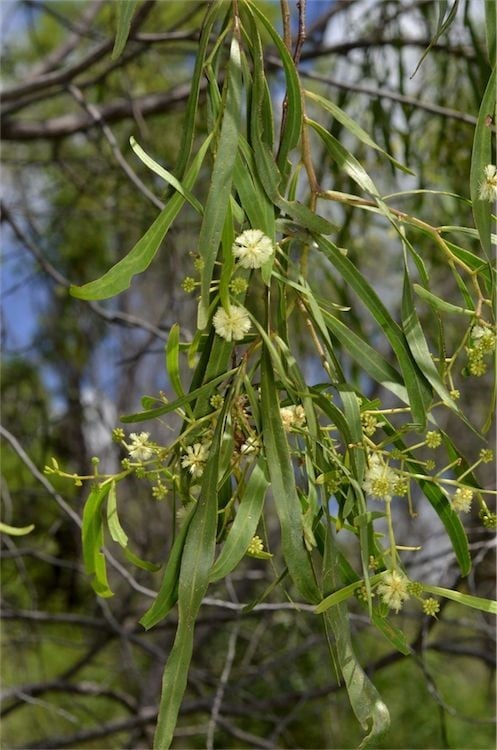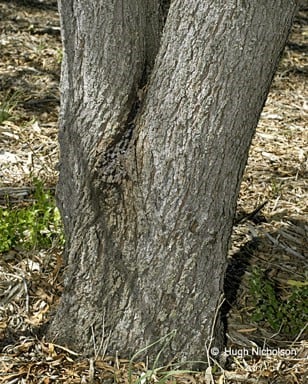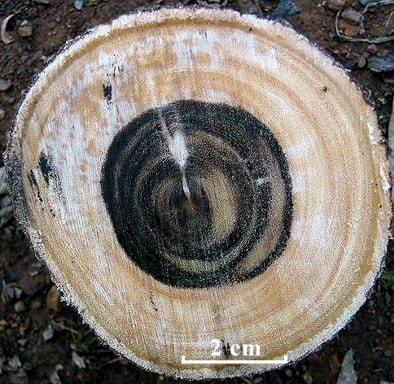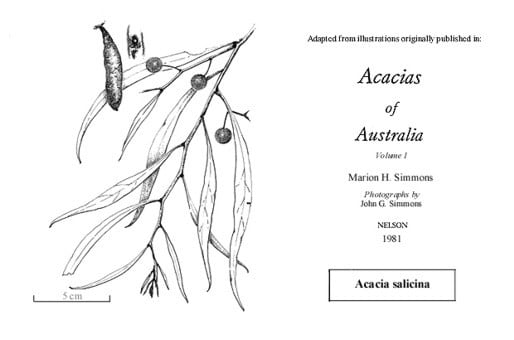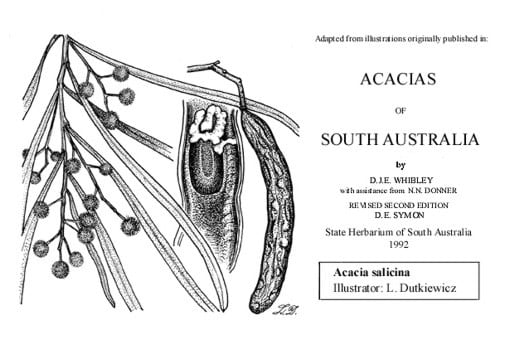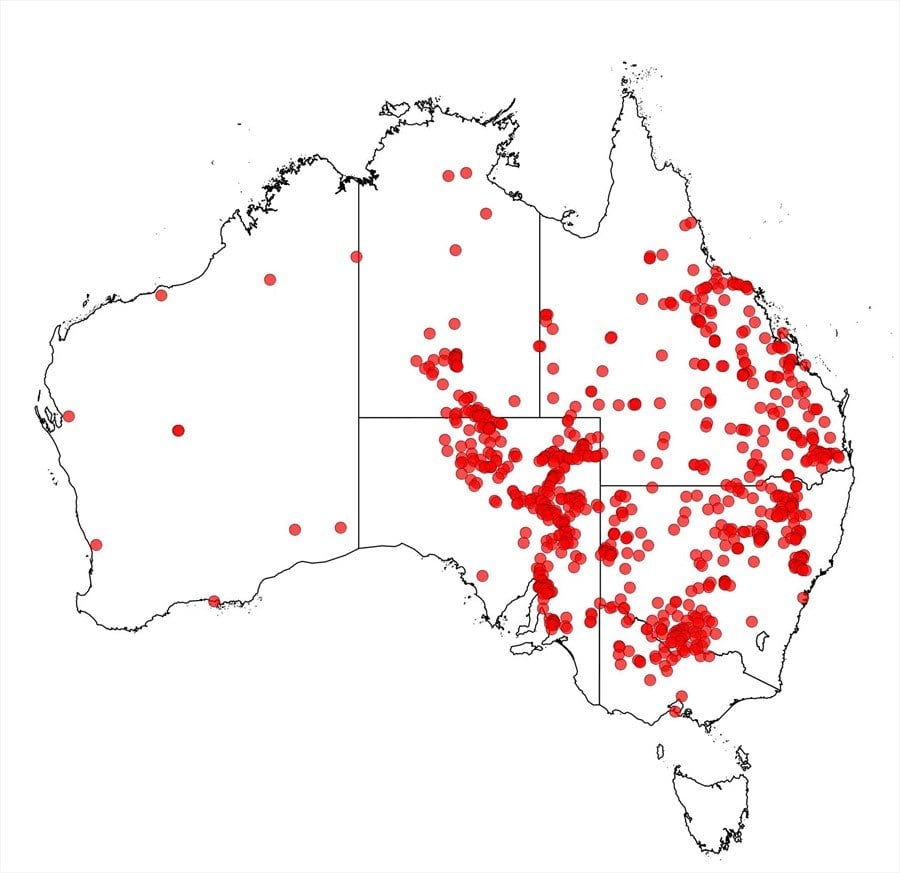Acacia salicina Lindl.
WATTLE
Acacias of Australia
Common Name
Broughton Willow, Cooba, Doolan, Native Wattle, Willow Wattle and others, see G.M.Cunningham et al., Pl. W. New South Wales 371 (1981)
Family
Fabaceae
Distribution
Widespread in eastern Australia, predominantly in central Qld and western N.S.W., but extending to N.T., S.A. and Vic. A few specimens from near Wiluna, W.A., may possibly be this species, but pods are need to confirm the identity of the plants, and field work undertaken to ensure that they represent natural occurrences, e.g. about 12 miles [19.3 km] W of Wiluna, I.J.Mason LAC 5279 (PERTH).
Description
Shrub or tree 3–13 m high, sometimes to 20 m high in N.S.W., often clonal due to suckering habit. Branchlets pendulous, dark grey-brown, glabrous. Phyllodes pendulous, variable, linear to narrowly oblanceolate or narrowly elliptic, (5–) 7–20 cm long, 4–30 mm wide, l:w = 4–40, ±flaccid, green to grey-green, sometimes glaucous, glabrous, 1-nerved, penninerved; glands 2–5, lowermost 0–5 mm above pulvinus, and distal glands often prominent and one at base of mucro. Inflorescences 2–8-headed racemes; raceme axes mostly 1–5 cm long, glabrous, rarely appressed-puberulous; peduncles (4–) 5–15 mm long, glabrous; heads globular, subdense, 15–25 (–30)-flowered, cream to pale yellow. Flowers 5-merous; sepals united into a ±truncate calyx. Pods narrowly oblong, to 12 cm long, 7–13 mm wide, woody, thick, longitudinally striate when dry, grey-green, glabrous. Seeds longitudinal, elliptic to oblong-elliptic, 4.5–6 mm long, shiny, dark brown to black; aril scarlet.
Phenology
Flowers irregularly throughout the year with peak appearing to be Apr.–June.
Habitat
Grows mostly along water courses and on floodplains, in soils ranging from sand to clay. For full discussion of habitat and of uses, see J.W.Turnbull (ed.), Multipurpose Austral. Trees Shrubs 192 (1986).
Specimens
N.T.: Burt Plain, c. 51 km N of Alice Springs, D.J.Nelson 343 (PERTH). S.A.: Yandama Ck, 16 km SW of Hawker Gate, J.Campbell & J.Pickard 1266 (PERTH); Dry Ck, Northfield, suburb N of Adelaide, D.N.Kraehenbuehl 158 (PERTH). Qld: Milray Stn, S of Pentland, S.T.Blake 9971 (BRI); Budgerygar, 64 km SW of Yaraka and 80 km E of Windorah, R.W.Johnson 3078 (BRI). N.S.W.: c. 10 km E of Scone towards Moonan Flat, R.Coveny 2381 (PERTH); Murrumbidgee R., 17.5 km WSW of Darlington Point P.O., Yarrada State Forest, R.G.Coveny 12889 et al. (PERTH). Vic.: Spence Bridge education area, A.C.Beauglehole 83493 (MEL, PERTH).
Notes
Information on the biological and ecological features, and the utilisation potential, of this species is given in B.R.Maslin and M.W.McDonald, AcaciaSearch: Evaluation of Acacia as a woody crop option for southern Australia, RIRDC Publication No. 03/017, 198–203 (2004).
A member of the ‘A. bivenosa group’, which in the past was often confused with A. ligulata and A. ampliceps : see A.R.Chapman & B.R.Maslin, Nuytsia 8: 249–283 (1992) for review. It is distinguished most readily from A. ligulata by its pendulous phyllodes and cream to pale yellow heads, and from A. ampliceps by its fewer-flowered, cream to pale yellow flower-heads and broader pods.
FOA Reference
Data derived from Flora of Australia Volumes 11A (2001), 11B (2001) and 12 (1998), products of ABRS, ©Commonwealth of Australia
Author
Minor edits by B.R.Maslin & J.Rogers
A.R.Chapman, B.R.Maslin
This identification key and fact sheets are available as a mobile application:
URL: https://apps.lucidcentral.org/wattle/
© Copyright 2018. All rights reserved.
